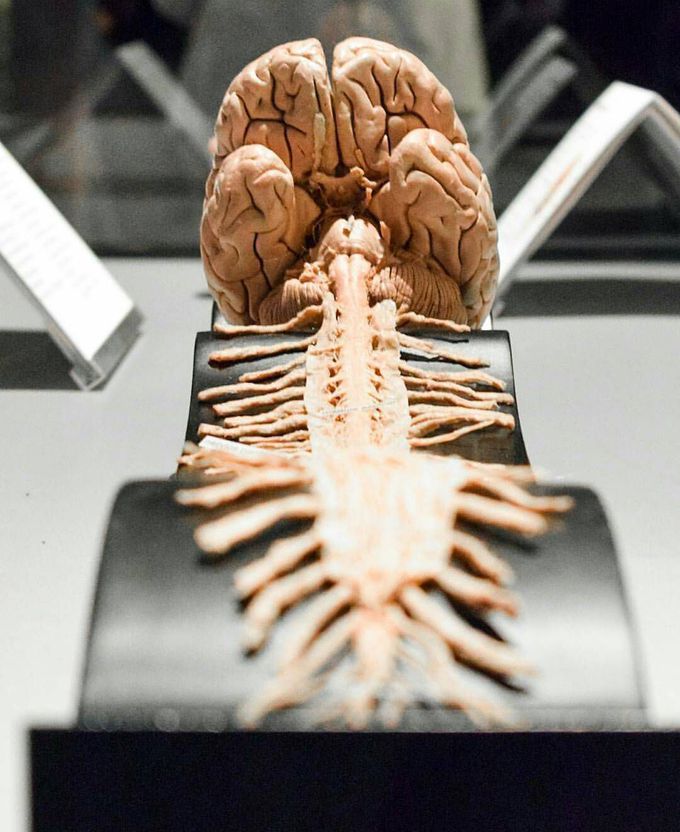


A beautiful photo of central nervous system. 💥
The central nervous system consists of the two major structures: the brain and spinal cord. The brain is encased in the skull, and protected by the cranium. The spinal cord is continuous with the brain and lies caudally to the brain, and is protected by the vertebrae. The spinal cord reaches from the base of the skull, continues through or starting below the foramen magnum, and terminates roughly level with the first or second lumbar vertebra, occupying the upper sections of the vertebral canal.From and to the spinal cord are projections of the peripheral nervous system in the form of spinal nerves (sometimes segmental nerves). The nerves connect the spinal cord to skin, joints, muscles etc. and allow for the transmission of efferent motor as well as afferent sensory signals and stimuli. This allows for voluntary and involuntary motions of muscles, as well as the perception of senses. All in all 31 spinal nerves project from the brain stem, some forming plexa as they branch out, such as the brachial plexa, sacral plexa etc. Each spinal nerve will carry both sensory and motor signals, but the nerves synapse at different regions of the spinal cord, either from the periphery to sensory relay neurons that relay the information to the CNS or from the CNS to motor neurons, which relay the information out.

